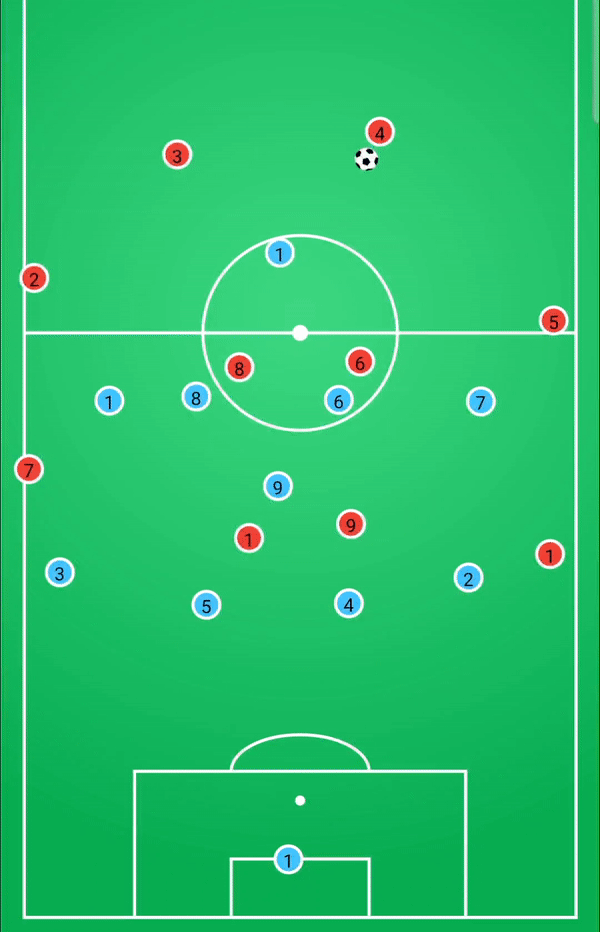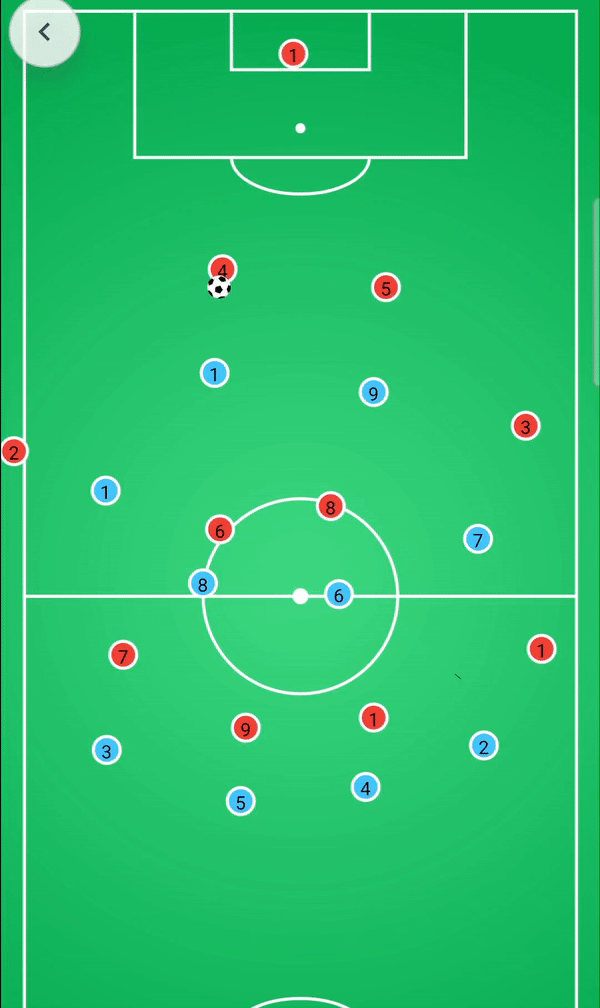Positional play also means wanting to actively shape the game at all times. This applies not only to the phase in possession of the ball, but also when the opponent has the ball. The aim is to constantly build up pressure in order to disrupt the opponent’s order and at the same time create superior numbers near the ball in order to ultimately win the ball.
Cover Shadow
Cover shadow means the area that a defender covers in his back. In this area is practically “dead space”, in which the opponent is not playable. The closer the defender is to the person with the ball, the greater the coverage shadow, and consequently the less space (and time) for the opponent.
In the following example, the idea of the cover shadow is demonstrated. Initially, the blue forward directs the opponent’s attack by taking the center defender into cover shadow after the cross pass. Although the red team successfully breaks up the pressing, the pressure can be maintained as the blue (6) moves out, and in turn

Moving Out and Secure
Always the player closest to the ball should move out to attack the opponent. For the remaining players it means to secure the spaces behind this player, i.e. to push through to the side of the ball:

Foul breaks Pressing
The goal of pressing is to win the ball, too hasty tackling can lead to fouls, which allows the opponent to regroup. Fouls are rarely useful, only to interrupt the opponent’s “rhythm” or to stop a dangerous counterattack.
Create Power Play near the ball
To win the ball, you try to create superiority near the ball. Here there are two pressing variants: either you try to win the ball in the center, or outside.
The former has more advantages in terms of counterattacking, but it is also riskier, because the opponent has more possibilities in the center. If the attackers can play off the pressing, they are closer and more dangerous to the goal.
Pressing trap center
Opposing defender is approached in an arc, so that the line pass is not possible. The pressing trap consists of playing to the red (8). This player is intentionally left free. As soon as the pass is played, the trap “snaps” shut.

Pressing Trap Outside

Excursus: 1 vs. 2 situations
If you have managed to create a 1 vs. 2 outnumbering situation, one of the two players (the player closer to the goal) tries to confront the opponent, and ideally to prevent him from turning up. He deliberately directs him in the direction of the second defender. The latter, on the other hand, acts actively and tries to win the ball. The player should “run through”, i.e. not slow down from the tempo. Even if he does not win the ball, he forces the opponent to make a decision, which gives the setting player the opportunity to win the ball.
Outlook
In the previous articles, we presented various principles of play. In the following and last part of this series, we will discuss their implementation in training. What methodological principles should be observed? What could suitable forms of training look like?
